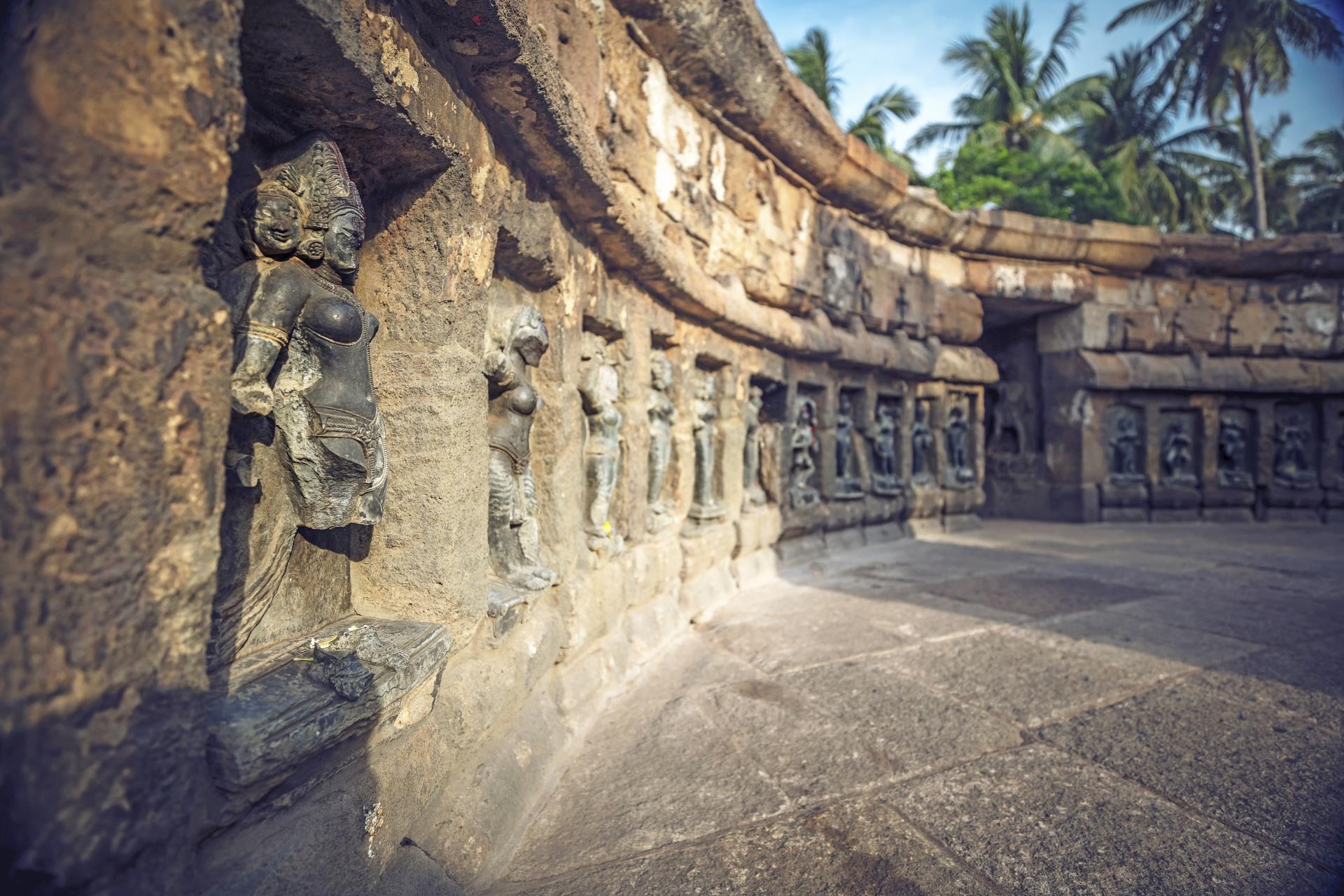|
Bhubaneswar:
Bhubaneshwar, Odisha's capital, is renowned for being a city of more than 700 temples (though many have been destroyed over the ages). The majority of which are dedicated to Lord Shiva and history reveals why. The name Bhubaneshwar comes from Shiva's Sanskrit name, Tribhubaneswar, meaning "Lord of Three Worlds". Bhubaneshwar was one of Lord Shiva's favorite places, where he liked to spend time under a huge mango tree. Many of the temples in Bhubaneshwar were built from the 8th-12th centuries AD, during the time Shaivism (worship of Lord Shiva) dominated the religious scene. The towering, heavily sculptured spires of the temples of Bhubaneshwar are quite astounding. The admiration for their creation and their exquisitely carved bases is fully justified. The history of Bhubaneswar preceding the seventh century A.D. is extremely obscure. Fortunately, it is not so obscure in the field of archaeology. Parts (such as Sisupalgarh) were in occupation till the middle of the fourth century A.D. The finds from the site include the Kushana and imitation Kushana coins, clay “bullae” imitating Roman coins and a unique gold piece having on the obverse a late Kushana motif with legends in characters of the 3rd century A.D. and on the reverse a Roman head with a Roman legend. Roman contacts of Sisupalgarh are thus unmistakable. To the early centuries of the Christian era also belong a few heavy “Yaksha” and “Naga” statues, specimens of which are exhibited in the Orissa State Museum. One life-sized pot-bellied Naga and two “Nagi” sculptures can be seen under worship in the village of Kapilprasad, 3 ¼-km. South of Bhubaneswar. The earliest group of the surviving temples were probably built during the first quarter of the 7th century A.D. The building activity was in full swing until about the beginning of the 12th century. One of the inscriptions on a wall of the jagamahana of the Lingaraja temple records the grant by the Ganga king Anantvarman Chodaganga (A.D. 1078-1150) of a village for the maintenance of a lamp in the temple of Krittivasas (original name of Lingaraja) in A.D. 1114-15, presupposing thereby not only the existence of the Lingaraja temple but Chodaganga’s conquest of Bhubaneswar before that date. Given
that there are more than 700 temples here, to choose a few is difficult,
but few of the well known temples include: Lingraj Temple (the king of lingas, the phallic symbol of Lord Shiva) built 11th Century represents the culmination of the evolution of temple architecture in Odisha. Its spire is around 180 feet tall. There are more than 64 smaller shrines in the sprawling temple complex as well. They're magnificently decorated with sculptures of gods and goddesses, kings and queens, dancing girls, hunters, and musicians. Unfortunately non-Hindus won't be able to appreciate its beauty as only Hindus are allowed to enter the temple complex. Non-Hindus can, however, get to see inside the temple complex from a distant viewing platform. Mukteshwar
Temple, built: 10th Century, is one of the smallest and most
compact temples in Bhubaneshwar at a height of 34 feet. However, it's
famous for its exquisite stone archway, and ceiling with eight-petal
lotus inside its porch. A number of the carved images (including lion
head motif) appear for the first time in the temple architecture.
The temple's name, Mukteshwar, means "Lord who gives freedom
through yoga". You'll find ascetics in various mediation poses
on the temple, along with figures from Hindu mythology, folktales
from Panchatantra (five books of animal fables), as well as Jain munis
(monks/nuns). Rajarani Temple, built: 10th Century, is unique in that there is no deity associated with it. There's a story that the temple was a pleasure resort of an Odia king and queen (raja and rani). However, more realistically, the temple got its name from the variety of sandstone used to make it. The carvings on the temple are particularly ornate, with numerous erotic sculptures, leading the temple being referred to as the Khajuraho of the East with similar spacious and immaculately kept temple grounds. Another of the temple's striking features are the clusters of smaller carved spires on its spire. Vaital Deul Temple, built 8th Century, is dedicated to a ferocious form of the Great Goddess Kali, having a reputation of being a powerful tantrik center. Inside the temple stands the mighty Chamunda (Kali) wearing a necklace of skulls with a corpse at her feet. Tantriks find the dimly lit interior of the temple an ideal place for absorbing age-old currents of power that emanate from this spot. Yogini
Temple, built: 9-10th Century, is located in Hirapur, about
15 kilometers east of Bhubaneshwar. The temple is one of only four
yogini temples in India dedicated to the esoteric cult of tantra.
It's shrouded in mystery and many locals are fearful of it. The temple
has 64 stone yogini goddess figures carved on its inside walls, representing
the 64 forms of the diving mother created to drink the blood of demons.
The yogini cult believed that worshiping the 64 goddesses and the
goddess Bhairavi would give them supernatural powers. The temple doesn't
have a roof, thereby allowing the 10
kms west of Bhubaneswar are the Udayagiri Caves, which were occupied
by the Buddhist monks as early as the 2nd century BC. |


 yogini
goddesses to fly out and roam around at night. A visit early in the
morning with the fog gives the temple an ethereal feeling, or at sunset
when the yoginis are stained red by the light and appear to come alive.
The quiet village setting among paddy fields adds to the atmosphere.
yogini
goddesses to fly out and roam around at night. A visit early in the
morning with the fog gives the temple an ethereal feeling, or at sunset
when the yoginis are stained red by the light and appear to come alive.
The quiet village setting among paddy fields adds to the atmosphere.